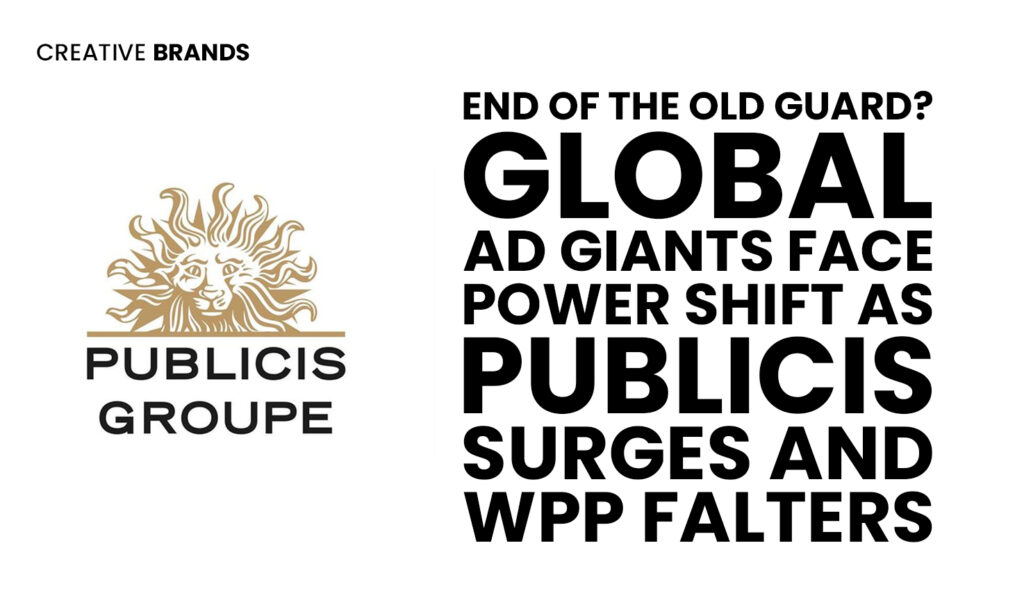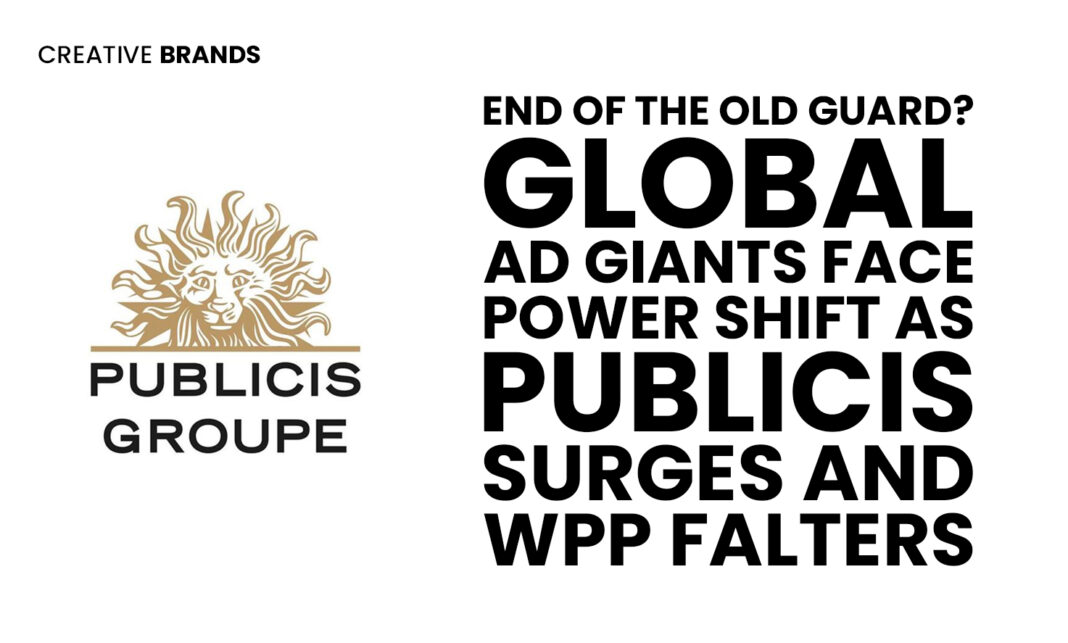Publicis and Havas surged ahead in Q3 2025 with strong AI-driven growth, while WPP faced revenue declines and major restructuring. Omnicom and IPG are nearing a historic merger, signalling a global power shift in advertising. Emerging markets like India and Southeast Asia remain key growth hubs amid industry transformation.

The advertising world is witnessing one of its biggest shake-ups in years. As third-quarter 2025 results rolled in, the traditional hierarchy among global ad giants began to blur — with Publicis Groupe and Havas powering ahead on the back of artificial intelligence-driven strategies, while WPP reported a worrying decline that has triggered sweeping restructuring plans. Meanwhile, Omnicom and Interpublic Group (IPG) are preparing for a landmark merger that could redraw the global creative map altogether.
What’s emerging is a clear message: in an industry once ruled by legacy relationships and creative prestige, the new determinants of success are data, technology, and operational efficiency.
Publicis Takes the Lead
Publicis Groupe continued its upward trajectory this quarter, cementing its reputation as the most adaptive of the old holding companies. Its investments in AI, data integration, and platform-based solutions have paid off handsomely. Clients are increasingly seeking agencies that can not only craft compelling campaigns but also navigate the fast-evolving landscape of automated media buying, predictive analytics, and personalisation at scale.
For Publicis, this shift has translated into double-digit growth in AI-driven marketing solutions and stronger client retention. The company’s Epsilon and Sapient divisions, long considered its key differentiators, have become central to its positioning as a “data-fueled, creativity-powered” network.
Havas Rides the AI Wave
Havas, often seen as a smaller but nimbler competitor, surprised the market with a strong showing as well. Its emphasis on meaningful media and content ecosystems — powered by AI tools for insight generation and campaign optimisation — has resonated with brands looking for tighter integration between creative storytelling and measurable performance.
CEO Yannick Bolloré’s bet on technology-enabled creativity appears to be paying off, with Havas gaining share in Asia-Pacific and Europe. The company’s results highlight how even smaller holding groups can compete effectively by marrying agility with tech-led innovation.
WPP’s Moment of Reckoning
In contrast, WPP — the world’s largest advertising conglomerate by revenue — is struggling to keep pace. The company reported another quarter of revenue declines, prompting CEO Mark Read to promise “fundamental restructuring” aimed at simplifying operations and accelerating its digital transformation.
While WPP continues to generate significant business from major clients, the cracks are showing. Its sprawling structure and slower integration of AI-driven processes have made it harder to respond to clients’ evolving expectations for real-time, data-rich solutions.
However, one bright spot for WPP is India, which posted a 6.7% growth rate this quarter — a testament to the country’s expanding role as both a talent hub and a growth engine. The gains in India helped offset steep declines in China, where a sluggish economy and cautious brand spending have hit advertising demand.
Omnicom and IPG: A Merger That Could Change Everything
In perhaps the most dramatic twist of the season, Omnicom and Interpublic Group are reportedly close to finalising a merger that could redefine global advertising power dynamics. If completed, this would create a combined entity with unprecedented scale in both creative and data capabilities — and the potential to rival Publicis in integrated offerings.
Industry insiders say the merger talks reflect a growing belief that scale alone is not enough; it must be accompanied by technological strength and operational agility. For Omnicom and IPG, both of which have been investing heavily in martech and AI partnerships, the union could help streamline costs while giving clients end-to-end solutions across creative, media, and analytics.
Emerging Markets Hold the Balance
Amid these tectonic shifts, emerging markets are acting as the industry’s steady anchor. India and Southeast Asia, in particular, have emerged as critical battlegrounds for growth. With their young populations, digital-first consumers, and expanding advertising ecosystems, these regions are providing both the scale and talent that global holding companies increasingly depend on.
Publicis and Havas reported strong momentum across Asia-Pacific, especially in China, where their integrated “Connected Media” offerings helped offset broader economic softness. This regional resilience contrasts with the uneven performance in Western markets, where advertising budgets have been under pressure from inflation and geopolitical uncertainty.
AI as the Great Divider
The results across the big holding companies make one thing clear: artificial intelligence is no longer a buzzword — it’s the dividing line between those that lead and those that lag. Agencies that have embedded AI into their planning, production, and performance measurement are growing faster, winning clients, and improving margins. Those still relying on traditional service models are facing stagnation.
Publicis and Havas have emerged as early winners in this transformation, while WPP’s ongoing overhaul may determine whether it can reclaim lost ground. The impending Omnicom–IPG merger could further intensify competition, forcing others to accelerate their own evolution or risk irrelevance.
A New Era Dawns
As the dust settles on Q3 2025, one question looms over Madison Avenue and beyond: are we witnessing the end of the old guard in advertising?
The industry that once revolved around creative brilliance and global scale is being reshaped by data intelligence, automation, and agile execution. The future belongs to those who can blend creativity with computational power — who can turn insights into impact faster and more precisely than ever before.
In that sense, the story of this quarter is not just about quarterly earnings. It’s about a once-traditional industry remaking itself for a digital-first, AI-driven world — and deciding who among its giants will define the next chapter.
Discover more from Creative Brands
Subscribe to get the latest posts sent to your email.






